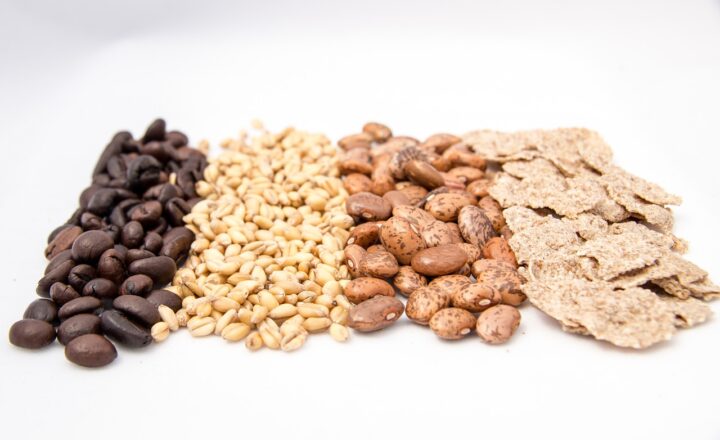
Building muscle effectively involves more than just lifting weights; it requires an understanding of various phases of training and nutrition, primarily bulking and cutting. Both phases are crucial for bodybuilders, athletes, and fitness enthusiasts looking to enhance their physique and performance.
1. What are Bulking and Cutting?
The bulking phase focuses on gaining muscle mass through a calorie surplus, while the cutting phase emphasizes fat loss while preserving muscle mass.
Bulking: This phase typically lasts several months, during which individuals aim to consume more calories than they burn. The idea is to provide the body with sufficient energy and nutrients to support muscle growth.
Cutting: In contrast, the cutting phase usually happens after a bulking period. It involves reducing calorie intake to shed body fat while maintaining as much lean muscle mass as possible. The goal is to reveal the muscle definition developed during the bulking phase.
2. The Bulking Phase: Key Components
The bulking phase is about strategically increasing calorie intake, focusing on nutrient-dense foods to maximize muscle gain. Here are the key components to consider during bulking:
a. Caloric Surplus: To bulk effectively, you should aim for a caloric surplus of about 250-500 calories above your daily maintenance level. This surplus allows for muscle growth.
b. Macronutrient Ratios: A typical bulking diet consists of:
– Proteins (25-30%): Essential for muscle repair and growth. Aim for 1.2 to 2.2 grams of protein per kilogram of body weight.
– Carbohydrates (50-60%): The primary energy source. Focus on complex carbs like whole grains, fruits, and vegetables to fuel workouts.
– Fats (15-25%): Healthy fats, found in avocados, nuts, and olive oil, are crucial for hormonal balance and overall health.
c. Strength Training: An intense weightlifting routine with progressive overload is vital. Aim for 4-6 reps of heavy weights for compound exercises, focusing on major muscle groups such as squats, deadlifts, and bench presses.
d. Recovery: Adequate rest, including quality sleep and active recovery, is crucial. Muscles grow during recovery, not while lifting.
3. The Cutting Phase: Strategies for Success
Once you have built a substantial amount of muscle, the cutting phase allows you to shed excess fat while preserving muscle. Here’s how to do it:
a. Caloric Deficit: The cutting phase requires a caloric deficit of about 500-1000 calories below maintenance to facilitate fat loss. However, be cautious not to reduce calories too drastically to avoid muscle loss.
b. Macronutrient Adjustment: You may adjust your macronutrient ratios slightly during cutting:
– Proteins (30-35%): Increased protein intake minimizes muscle loss during a deficit, aiming for 1.6 to 2.2 grams per kilogram of body weight.
– Carbohydrates (40-50%): Lowered but still essential for energy. Include fibrous vegetables for satiety.
– Fats (20-30%): Maintain healthy fat intake to support hormonal levels.
c. Cardio: Incorporate cardiovascular exercise to enhance calorie burn and boost metabolism. Aim for 3-5 sessions of 20-30 minutes of moderate to high-intensity workouts each week.
d. Weight Training: Continue strength training focusing on maintaining lift intensity and volume. It’s important to lift heavy to signal your body to retain muscle while in a caloric deficit.
4. Transitioning Between Phases
a. Duration of Phases: Typically, the bulking phase lasts 3-6 months, while the cutting phase can last 8-12 weeks. You can adjust durations based on individual goals and progress.
b. Psychological Factors: Transitioning can be mentally challenging. Focus on the long-term goals and remind yourself of the benefits of each phase to maintain motivation.
c. Monitoring Progress: Regularly track body weight, body composition, and strength levels to see if adjustments in your diet or training are necessary.
5. Common Mistakes to Avoid
a. Overeating During Bulking: Many believe bulk means eating anything. However, excessive junk food can lead to unwanted fat gain. Focus on healthy calorie sources.
b. Undereating During Cutting: Cutting calories too much can result in muscle loss and decrease metabolism. Gradually reduce rather than drastically cut calories.
c. Forgetting about Hydration: Proper hydration supports overall health, aids digestion, and improves performance during workouts. Drink ample water throughout the day.
d. Inconsistent Training: Skipping workouts or inconsistent strength training can counteract efforts in both phases. Stay committed to your routine.
6. Conclusion
Understanding the bulking and cutting phases is vital for achieving your fitness goals. By following structured approaches to diet, training, and recovery, you set yourself up for success in building muscle and enhancing your physique.
Always remember that each individual is different. Tailoring your approach based on personal goals, body type, and lifestyle is key to effective muscle building. Whether you’re bulking or cutting, consistency, patience, and a balanced approach to nutrition and training will lead you to the results you desire.





